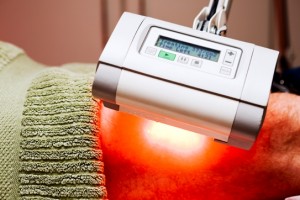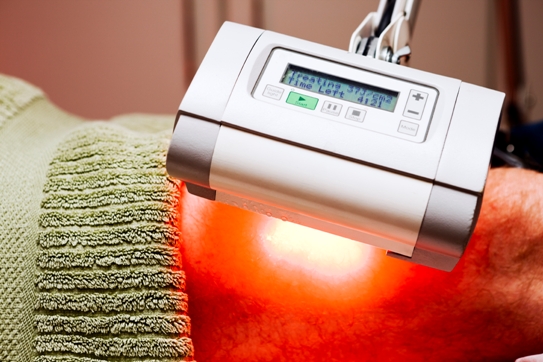Using Light to Prevent Skin Cancer and Reverse Aging
Topical photodynamic therapy, or PDT, involves applying a light-sensitizing cream on the skin. The sensitizer becomes concentrated in abnormal or damaged skin cells, rendering them vulnerable to destruction by light. A report in the June 2013 Journal of the European Academy of Dermatology and Venereology presents a summary of European guidelines for topical PDT.
The report notes that PDT has been studied for the treatment and possible prevention of superficial skin cancers and may be able to prevent skin cancers in people who have had long-term exposure to sunlight. This would seem ironic, since we’re using light to treat skin diseases that were originally caused by too much light!
“Accumulating evidence supports the use of PDT in acne and several other inflammatory/infective dermatoses including cutaneous leishmaniasis, although protocols are still to be refined,” the authors note. “PDT is a therapeutic option for photorejuvenation, with improvement in fine wrinkles, mottled hyperpigmentation, roughness and sallowness reported.”
For some additional perspectives, here’s an excerpt from The Medicine of Light:
“Thankfully, your skin has an amazing ability to regenerate, meaning that it can replace damaged or dying cells with completely intact, healthy cells. Young children have a phenomenal capacity for skin regeneration, but the ability is amply retained throughout adulthood and well into the golden years of life. In essence, with photorejuvenation, you’re using light to speed up the regenerative process, perhaps even turning back the biological clock.
“So how does this occur? The precise mechanisms are still being mapped out. We now know that photorejuvenation is associated with an increase in the formation of type I collagen in the skin. Collagen is the main protein in connective tissue and the most abundant protein in humans, comprising about one-quarter of your body’s entire protein supply. Along with soft keratin, collagen is responsible for skin strength, elasticity, and suppleness, and its breakdown or deterioration leads to wrinkles that accompany the aging process….”
Support us by buying our book, The Medicine of Light, and ebooks from our Photoimmune Discoveries eBook Series.
Source
© 2013, Photoimmune Discoveries, BV





 English
English Français
Français Deutsch
Deutsch Nederlands
Nederlands